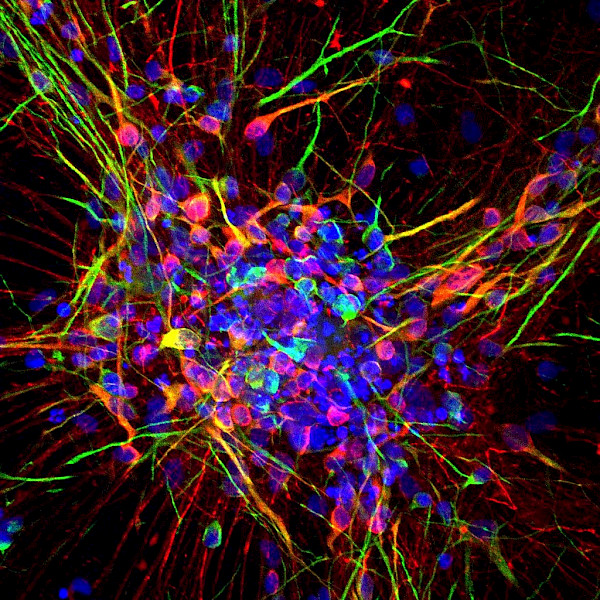
Tuberous sclerosis complex (TSC) is a disorder caused by loss of function mutations in TSC1 and/or TSC2 genes. Approximately 80-90% TSC patients also have epilepsy, a debilitating disorder characterized by mild to severe recurrent seizures. Other pathologies of TSC include autism spectrum disorder and intellectual disability. While some of the effects of TSC mutations can be diagnosed as early as 18-20 gestation weeks in a developing fetus, seizure onset often occurs later during early postnatal development. The consequences of TSC loss have been extensively studied in animal models and mature neurons, however, the effects of TSC loss on human-derived progenitor cells during early differentiation remains largely unknown. Using a TSC2 patient-derived iPSC experimental system, I am examining human-specific developmental changes that occur during early neural progenitor specification and differentiation, with primary focus on the role of the primary cilium and early patterning of inhibitory interneuron progenitors. Elucidating the mechanisms by which TSC2 loss affects neural progenitor specification and migration, could help to identify druggable targets to treat TSC patients prior to the onset of seizures. Importantly, many other neurodevelopmental disorders result from alterations in early neuron development. In addition to investigating the effects of TSC2 loss, I also study the functional significance of CDKL5 loss on neuron development and specification, with particular interest in the role of dysregulated cilia and downstream changes in Sonic hedgehog (SHH) pathway in CDKL5 deficient neural progenitors.
Nickesha Camille Anderson